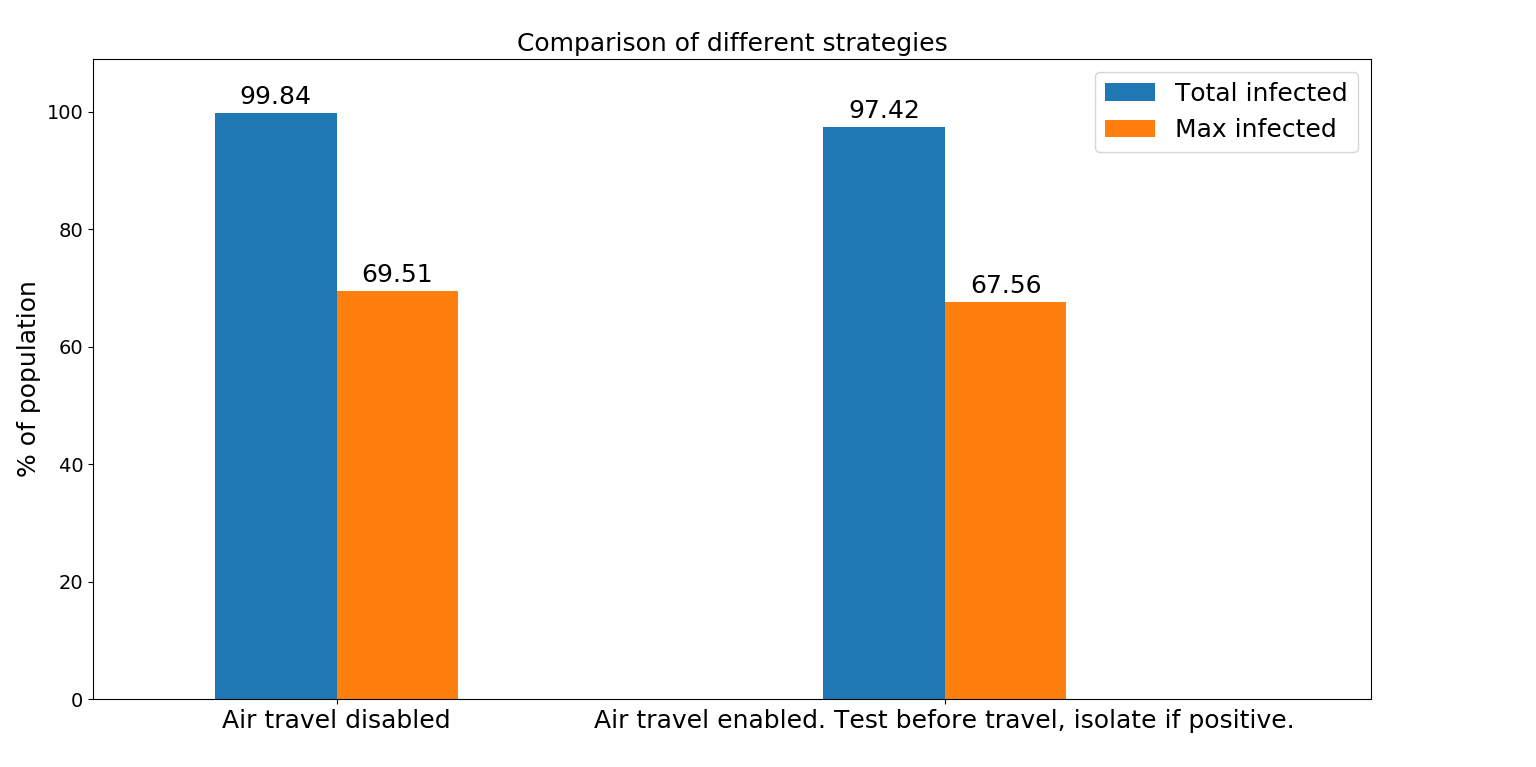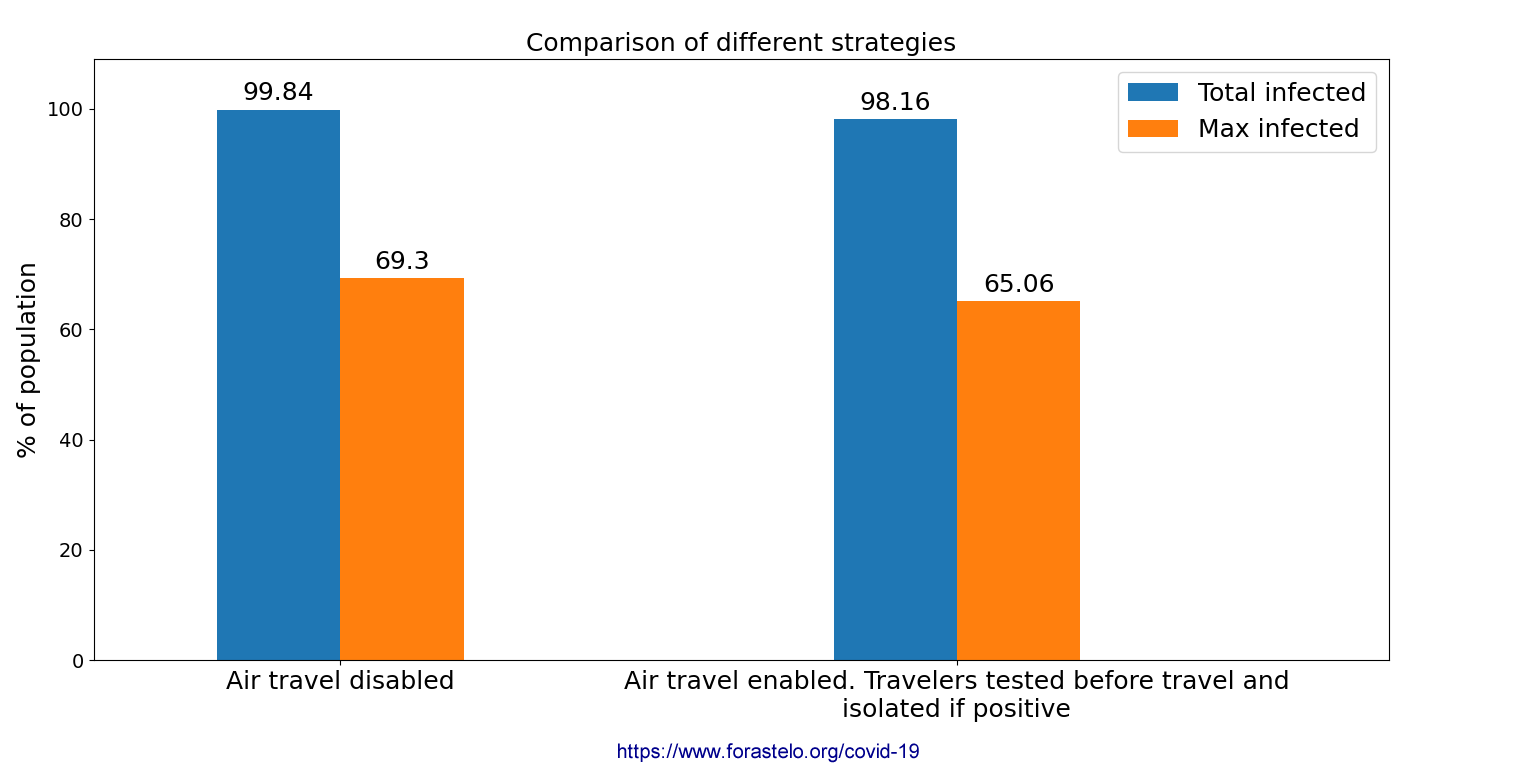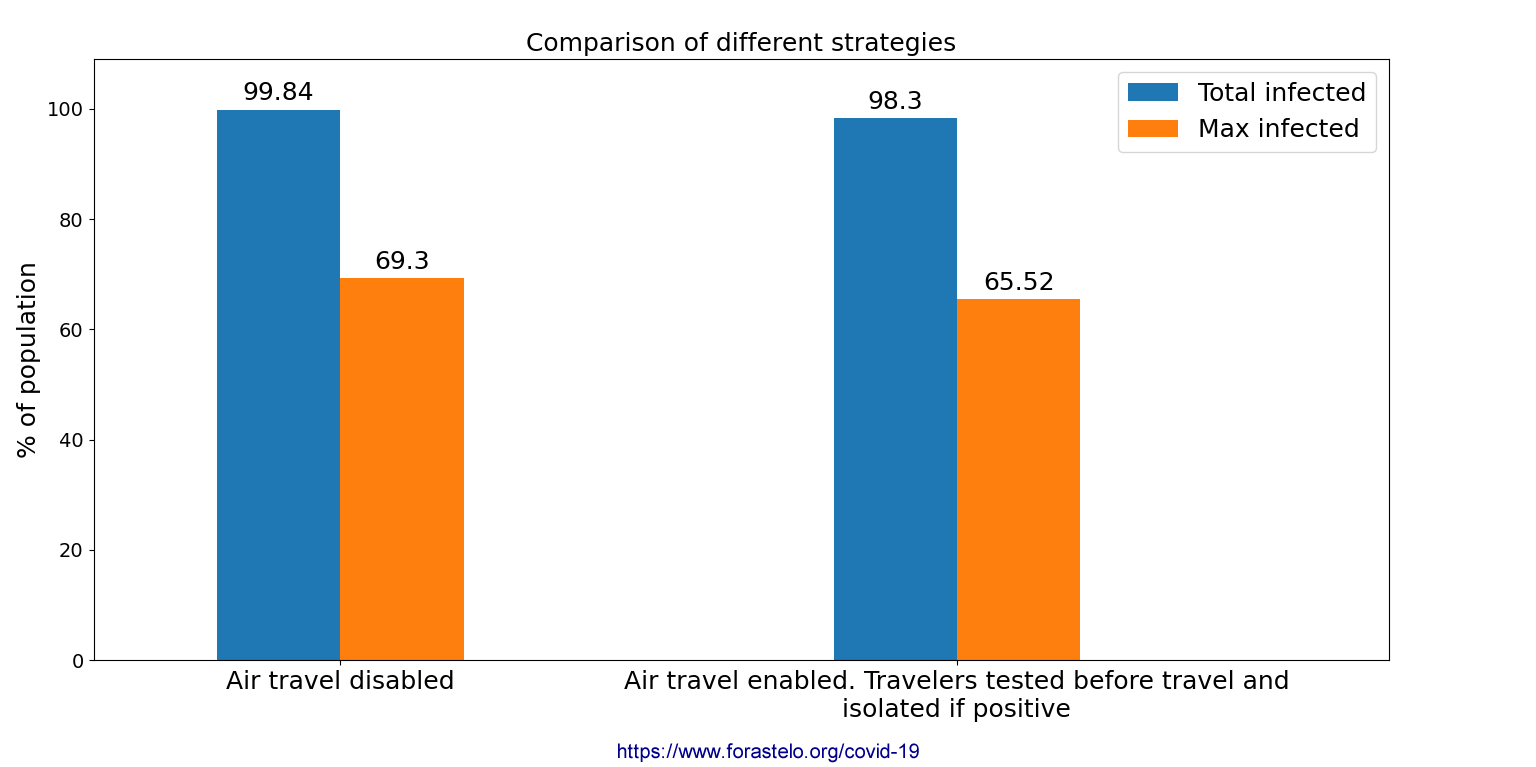In a previous article, the results of a computer experiment suggested that testing passengers before their flights and isolating positively tested cases can have a positive impact in the fight against the covid-19 outbreak and allow air travel to resume as usual. In this article, I present the results of the same experiment with a more realistic simulation model that takes into account the probability that passengers might get infected during air travel.
As shown in Figure 1, testing passengers before the flight and isolating positively tested cases is still better than stopping air travel. Average maximum infected population is decreased by 1.95% and average total infected population is decreased by 2.42% (permutation tests with p < 0.01 for both). The test accuracy is 98%, and 1% of the population travels by air every day.

Although the computation of the probability of getting infected during flight is somewhat arbitrary, it is rather pessimistic. This means that in reality, less passengers would probably get infected during flights, making this strategy even a more desirable option. Moreover, contacts of positively tested passengers are not traced in this experiment, so there is room for improvement. Test and trace strategy will be analyzed in a later experiment and presented with another article.
Once again, it seems that testing passengers before their flights is a good screening strategy and most importantly, it allows negatively tested passengers to enjoy their freedom of air travel almost like before the pandemic. In this way, air travel can be used as part of a screening strategy that can prevent new covid-19 infections.
This strategy should be tested with more realistic simulation models. If you know of a more realistic simulation that tests this strategy, please mention it in the comments, or share this article with the right people.
About the simulation
The computer experiments are performed with Covid-19 Simulation version 0.2. Visit github.com/firatio/covid19_simulation to read about the assumptions and rules used in the simulations. You can also view and download the source code. You can contribute to the project with your coding skills and/or ideas for new strategies to prevent the covid-19 outbreak from restricting our freedoms.


